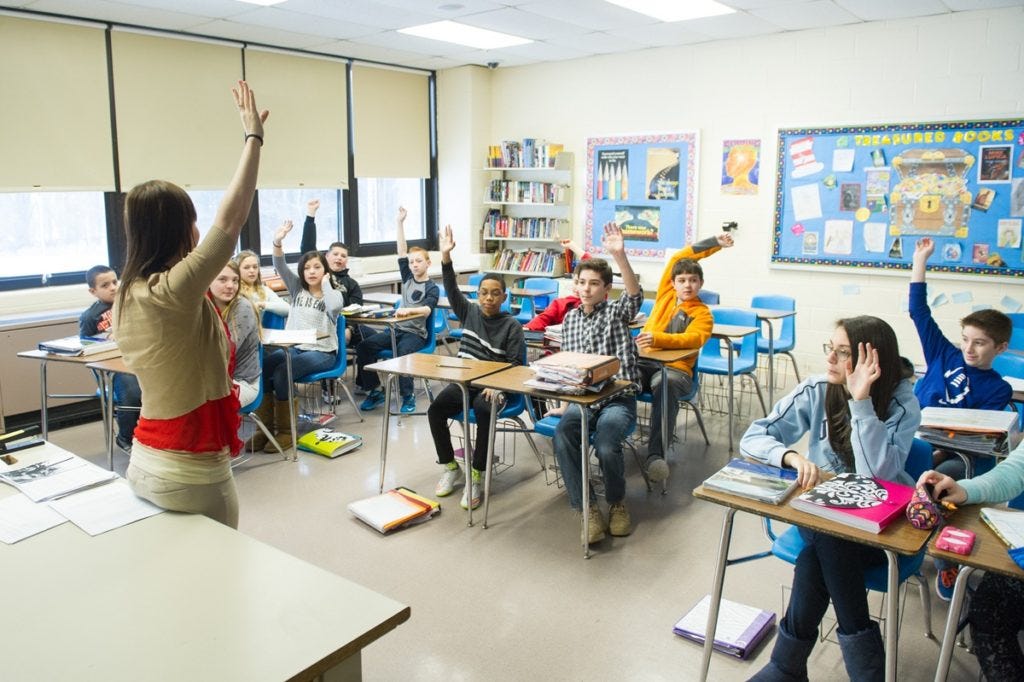Latest news about Bitcoin and all cryptocurrencies. Your daily crypto news habit.
“Classroom”. What do you envision when you hear this word? Well, that will change depending on when you were born. For most of us, born around 90s, we imagine a 3D space, with lots of children like us, smell of chalk dust around, blackboards, notebooks, bell, classroom chatter, assemblies and a dominant human figure establishing the decorum in class and spreading the knowledge, taking it out from the books and consciously putting that in our heads.
Yes, we had a resource crunch and yes we had only one teacher per subject. Things have changed a lot from there. Thanks to internet we have all the resources online taught by some of the best professors in the world. It feels great to have access to such resources. Last decade has also seen a boom in online learning platforms, be it Udemy, Coursera, Pluralsight, edX, Udacity and many more. These platforms are continuously refined to provide a great learning experience, adding discussion forums and assignments. Back in my college days, I used to think why to go all the way to lecture theatre when I can read about it on internet, and that is a question that still persists.
Do we really need physical rooms, in person lectures? Can’t we just do it online at our own pace and convenience? Well, undoubtedly online space is the most resourceful and convenient medium, I still believe there is a vital component missing out there.
 Image I found when I googled “Classroom”
Image I found when I googled “Classroom”
Just like chats are devoid of body language, tone and context, our digital online platforms are devoid of the human touch. Somehow, they fail to establish the student-professor relationship which is vital for great learning. The existence of another human in the same room who is teaching you and scrutinising you adds up as a vital component to the learning experience. Even today if you are asked to recall about learning in your grad schools, the things you recall first is the teaching style and body language of different professors, it’s easier to recall than the content of the course at times. There is a human who teaches you, motivates you and expects a particular kind of behaviour from you. There’s a personality and a vibe attached. Something that is difficult to replicate on digital mediums, where you can pause, rewind, 1.5x the videos of professor talking or even doze off mid-way.
On digital platforms you get the control
When you are in control, the experience changes. The discipline gets affected and motivation varies. That’s why it’s important to have a human figure around you who personally identifies you.
Same goes with the exercise apps, you control them, you can do sessions today or uninstall them or pause them , but when there’s an in-person coach there’s an added force that aligns you to accomplish the task with more dedication. Learning is not always easy and that force definitely helps in pushing the limits and mend your mind.
Humans behave differently when they are observed
This is the reason whole classroom experience gets so engaging. You are conscious, it’s not just the sense of hearing, your body posture is in order and different senses elevated. Digital platforms try to simulate as much of it as is possible, but until tech gets too advance, a physical classroom is the most refined simulation of the learning experience one can have.
Besides these, there are other small aspects:
- Writing down in your notebook while listening engages you more and the information retains in your memory for longer time. How often do we do that while learning online?
- In classroom discussions with the fellow students post lectures is one of the best things, we don’t have great ways to do this online. Even if you add a chat box or a chat room, the expressions, tones and body language are significant components of conversations that just can’t be ignored, especially when there is learning involved.
- Time tables go for a toss, to make the online platforms more convenient and “at your own pace”, we often enter into flexible timelines which again affects the discipline, flow and pace of learning. Learning is scheduled for a reason, creating gaps and resuming hampers the flow of learning.
We are doing great and technology is becoming better each passing day, but are we close to adding the humane touch to what we build? The answer is not that promising. We are in a fix with frameworks, bandwidth limitations, network calls, smooth UX, there is so much logic and programming factors invloved that it becomes easier to miss out on features that can actually enhance our engagement in digital learning. Can we replace professors?
I doubt no. We cannot as of today and we should not. It’s one of the best bonds I have known and I believe future humans should have an option to experience it too.
That’s all for this post. I’ll see you soon in the next post. Till then, disconnect, reflect, write and keep hacking ;)
On a funny note, as we have talked about tech addictions in previous posts, can we make an addictive app for learning? Will it work? Does it exist already? Will it be ethically right? Is there a thing like too much learning? I have heard excess of anything is bad, I guess I’ve just found a counter example to that phrase. What are your thoughts?
This post is authored under the concept of Summer of 90s.
Summer of 90s is an initiative to consciously analyze our usage of tech and spread awareness about the issues it brings along like digital privacy, security, tech addictions and design ethics.
You’re welcome to join us in the cause!
Follow us on medium, on Facebook or @summer.of.90s on Instagram because we need to spread the word.
Do we need a physical classroom? was originally published in Hacker Noon on Medium, where people are continuing the conversation by highlighting and responding to this story.
Disclaimer
The views and opinions expressed in this article are solely those of the authors and do not reflect the views of Bitcoin Insider. Every investment and trading move involves risk - this is especially true for cryptocurrencies given their volatility. We strongly advise our readers to conduct their own research when making a decision.

